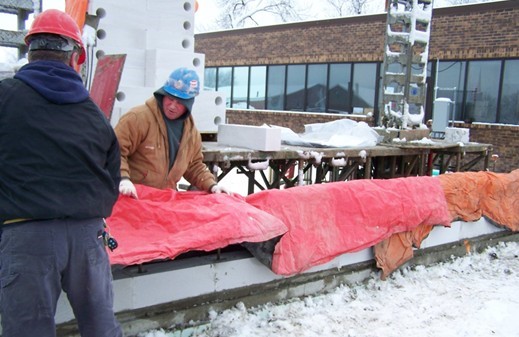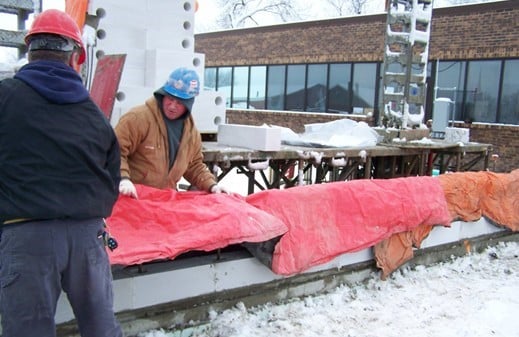In cold weather, mason contractors have to take precautions to ensure the optimal performance of masonry materials and to create a comfortable, safe, and productive environment for craftworkers. By code, cold weather is defined as 40° F and below. For construction projects taking place in fall and winter, contractors should include a cold weather plan with their submittals to the architect or engineer so that proper procedures can be implemented when temperatures hit 40° F.

Cold weather construction and protection provisions include:
- Keeping materials dry and protected by using pallets and tarps, and when necessary, placing units in a heated enclosure. According to the 2013 Building Code Requirements and Specification for Masonry Structures (MSJC), units with visible ice or snow are not permitted to be laid.
- Heating water and/or aggregates to achieve the required mortar temperatures (between 40°F and 120°F) at the time of mixing.
- Adjusting the grout mix to accommodate the weather, through means like decreasing the slump to reduce water content.
- Using weather-resistive covers or blankets to protect the completed masonry for 24 to 48 hours.
- Installing enclosures and heating work areas when temperatures reach 25°F or below to improve conditions for craftworkers, avoid interruptions caused by weather, help meet required material temperature targets, and provide better quality masonry.
- Use admixtures with caution to accelerate mortar or grout setting. This may only be done with approval from the design professional of record. Codified cold weather protection must be met before admixtures are considered.
For a complete guide on cold weather construction, including detailed construction and protection requirements specified by code and based on varying temperatures, download IMI’s Tech Brief, “Cold Weather Masonry Construction.”




